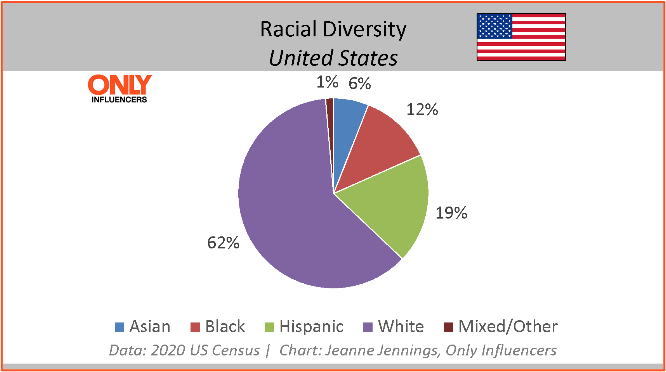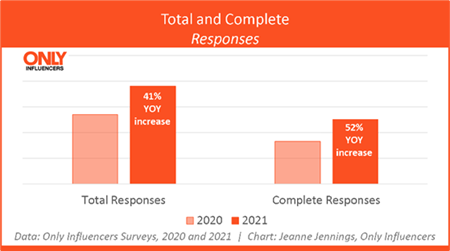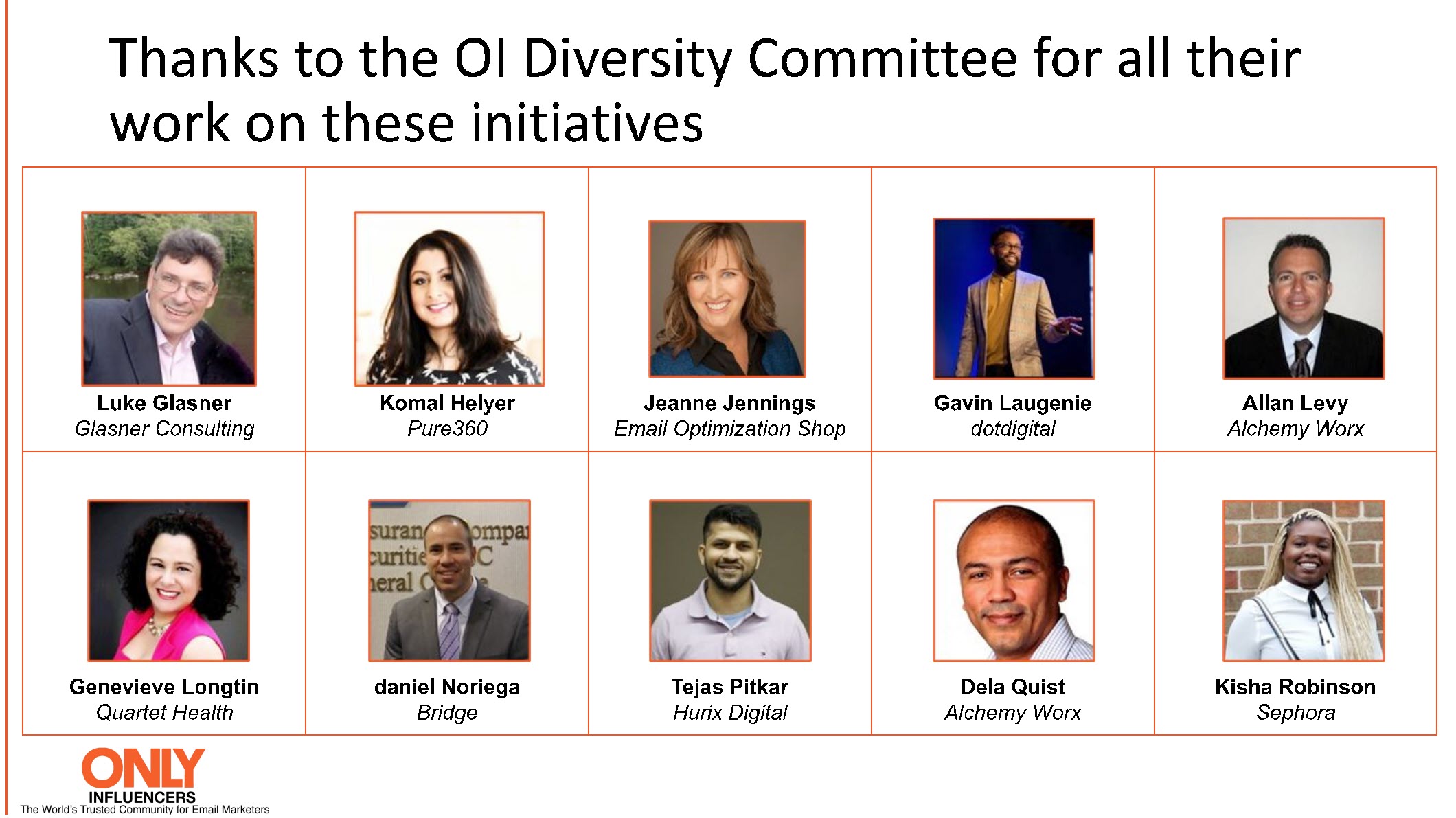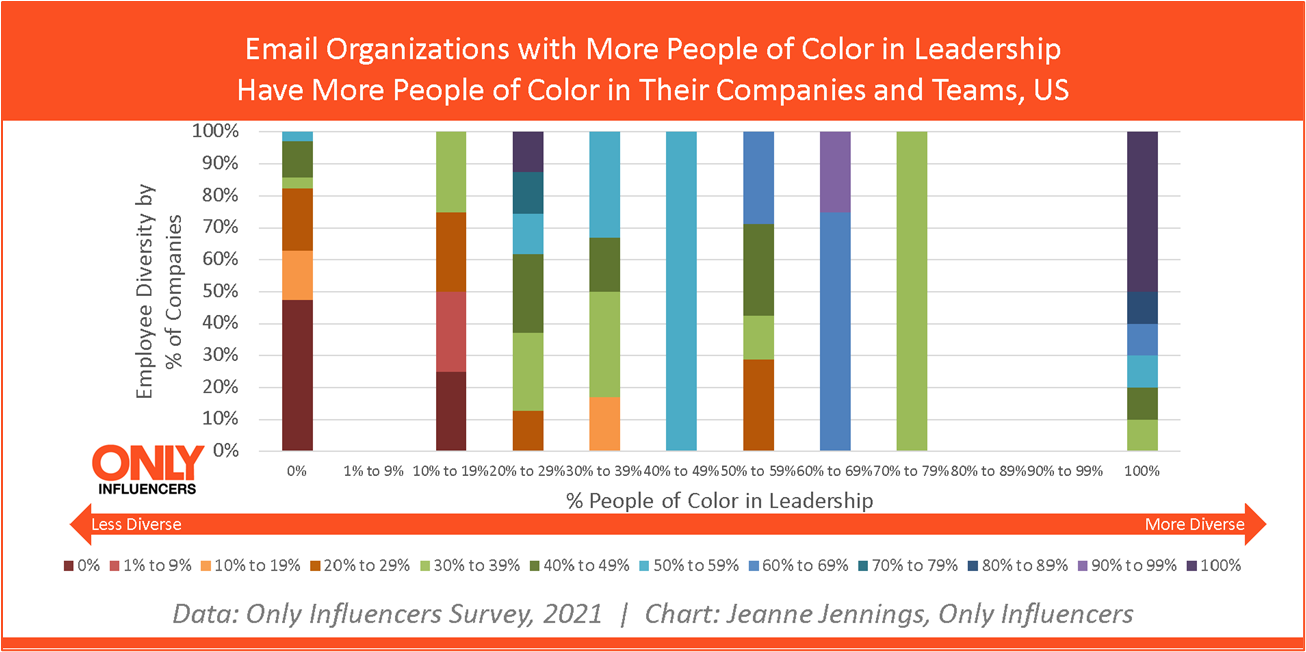Does having a more racially diverse leadership team create a more diverse organization?
This week Only Influencers published our second annual ‘Racial Diversity in the Email Industry’ Benchmark Report. We invite you to download the full report – and to watch our webinar presenting the highlights of that 44-page document.
But first, I hope you’ll take a minute to read this blog post about a new analysis we did this year to answer the question posed in the title of this post.
Many of us would like to see more racial diversity in the email industry; the Only Influencers Diversity Committee has set a goal to have the racial diversity of the industry match that of the population at large by January 2025.
In the OI diversity webinars that we’ve hosted we’ve talked a lot about hiring diversity. But we started to wonder if there wasn’t a top-down way to increase an organization’s diversity. Hence the question:
“Does having a more racially diverse leadership team create a more diverse organization?”
The short answer is “yes.”
We did this analysis for both the industry as a whole and just for organizations based in the United States; in both cases the answer was a clear yes. We didn’t have enough data to do a meaningful analysis of this for the UK (more on that at the end).
Let’s spend a little time on how to read the chart (it’s pretty but ferreting out the meaning can be daunting); then we’ll talk about the findings and how they lead us to a specific recommendation on increasing diversity in your organization.
How to Read the Chart
Here’s how we did the analysis. Using data from our 2021 ‘Racial Diversity in the Email Industry’ survey, we segmented organizations by what percentage of their leadership roles were held by people-of-color.
In the chart below, data on percentage of people-of-color in leadership appears across the X-axis; on the left side are companies/teams with no people-of-color on the leadership team, while on the right are organizations where 100% of the top roles are held by people-of-color.
The colors of the bars represent the companies/teams in each leadership category. For each segment, we’ve look at all the organizations in it (that’s why all the bars reach to 100%) and we’ve sub-segmented them into groups based on what percentage of their employees are people-of-color.
This is where the color key comes in. If an organization has no people-of-color on the team, they are represented by dark red (see the legend under the orange ‘less diverse/more diverse’ bar? The dark red is on the left next to ‘0%’). On the other end of the spectrum, we have organizations with 100% people-of-color working for them – this group is represented by dark purple, which appears next to ‘100%’ at the right side of the legend.
The Findings
Let’s look at the bars on either end of the chart, and then we’ll look at one in the middle.
On the left we have the bar showing us how diverse companies/teams with no people-of-color in leadership are. The bottom of the bar is dark red, and it extends nearly to the 50% mark. This means that roughly 50% of organizations with no people-of-color in leadership also have no people-of-color as employees.
At the very top of the bar on the left we see a small slice of light blue; this represents companies/teams with 50% to 59% people of color in their workforce. Of organizations with no people-of-color in leadership, about 5% (see the Y-axis; this slice goes from about 95% to 100%, which is 5% of the total) have 50% to 59% people-of-color as employees. This slice represents the most diverse organizations in this segment.
Here’s the table that we used to build the chart, for those who want the exact figures.

If we look at the bar at the far right, representing organizations with leadership made up of 100% people-of-color, we see a very different story.
Here a full 50% of companies/teams that have 100% people-of-color in leadership have 100% people-of-color in the workforce. The least diverse organizations in this group have 30% to 39% people-of-color on staff (the light green slice of the bar).
In the middle, looking at companies where people-of-color make up 50% to 59% of the leadership, we see three large slices in the bar, each representing about 30% of the companies in this group:
- Dark orange (20% to 29% people-of-color in the organization)
- Dark green (40% to 49% people-of-color in the organization)
- Medium blue (60% to 69% people-of-color in the organization)

According to the census (chart at the left), 38% of the United States is comprised of people-of-color. So, in a perfect world, we’d want to see all of the bars on or to the right of the 30% to 39% people-of-color in leadership mark. And we’d want to see only greens, blues, and purples in the bars – no red or orange. We still have some work to do, but it’s great to see so much green, blue, and purple on the chart.
Recommendations
In our webinars on diversity, we’ve talked a lot about hiring people-of-color to increase diversity in an organization. Recommendations here include:
- Start recruiting earlier – be open minded about backgrounds
- Use more diverse hiring channels
Learn more about how to implement both of these in our 2022 Benchmark Report: Racial Diversity in the Email Industry and in ‘Hiring Diversity: How to Do It,’ our 2021 webinar which is available on-demand. Both are available on the OI Diversity Initiatives page of our website.
Most of the focus to date has been on hiring entry level people.
These results from our survey suggest that to get to your goal of diversity more quickly, you should be taking a two-pronged approach. While continuing to look to hire people-of-color for entry level roles, you should also look to hire people-of-color for leadership roles within your organization.
Increasing diversity in leadership should help you increase diversity throughout your organization.
When you download the 2022 Benchmark Report: Racial Diversity in the Email Industry, you can also look at how diverse leadership impacts the diversity of an organization world-wide, in addition to the US-focused data we presented here.
Remember I said that we didn’t do this analysis for the United Kingdom? That’s because we didn’t have enough data from the UK to support it.

In fact, although we saw a dramatic increase year-over-year in both the total number of responses (up 41%) and the number of complete response (52%), we are still analyzing data from just a small portion of the email industry.
We’re asking for your help with this.
We’ll open this year’s ‘Racial Diversity in the Email Industry’ survey in October 2022. Here are few things you can do to help us increase the sample size:
- Take the survey yourself; share information on the diversity of your company or your team. All members of the email industry are encouraged to participate, including agencies, brand-side email marketers, consultancies, vendors, and others.
- When you see posts about taking the survey on social media, like and share them
- Ask your friends and colleagues in the industry to take the survey
- Create your own post, in LinkedIn, Twitter, or other social media channels, sharing a link to the survey and encouraging your contacts to take it as well.
- Do you or your organization have an in-house email list of email industry professionals? They could be agencies, brand-side email marketers, consultancies, vendors, or others. If so, encourage your subscribers to take the survey – and to help us get the word out – either in an email newsletter or a stand-alone message
Have other ideas? I’d love to discuss them. Reach out to me at Jeanne@OnlyInfluencers.com and let’s talk about other ways to get the word out about the survey and to help increase racial diversity in the email industry!

Finally, I want to send out a huge thank you to the members of the Only Influencers Diversity Committee! They are generously volunteering their time on these initiatives.
Interested in joining us? Contact me at Jeanne@OnlyInfluencers.com.

 How to resolve AdBlock issue?
How to resolve AdBlock issue? 

